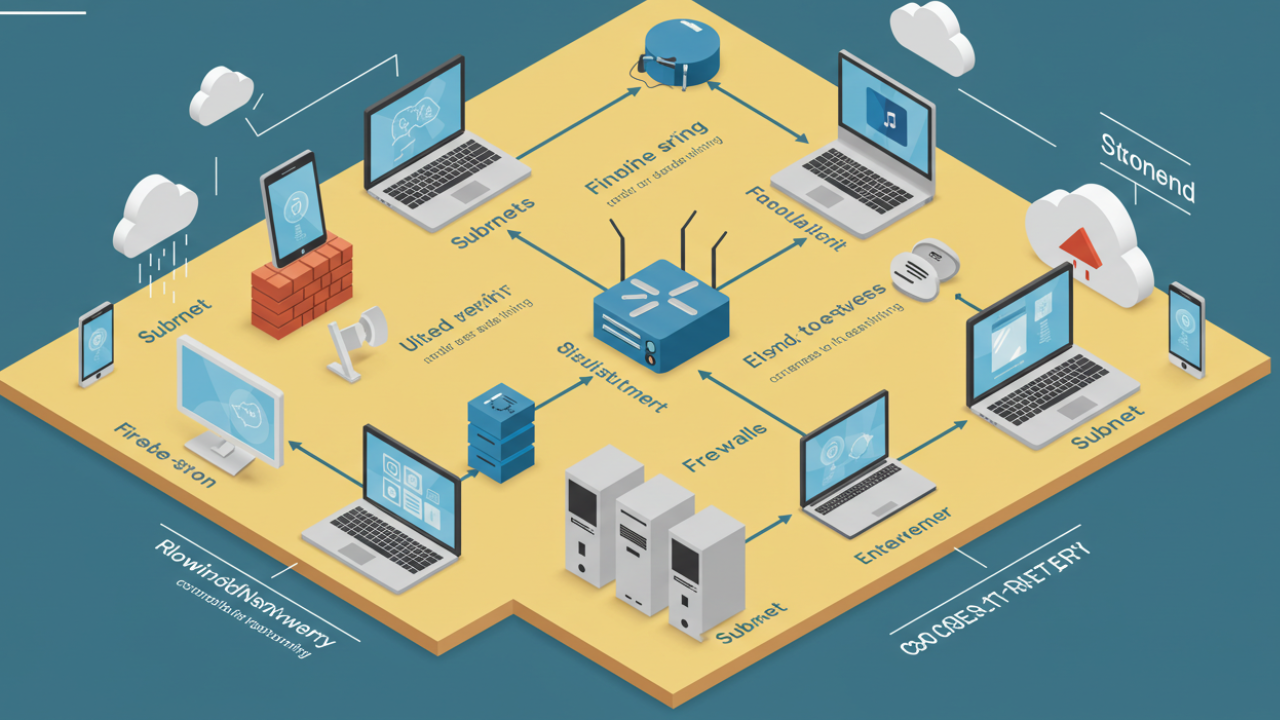Penetration testing (pen testing) is a critical skill in the cybersecurity world. For beginners, the best way to get hands-on experience is through interactive penetration testing labs. These labs offer a simulated, safe environment to practice and improve your skills without the risks of hacking real systems. If you’re just starting your journey in penetration testing, choosing the right lab is essential to ensure you learn efficiently.
Key Takeaways
-
Penetration testing is the practice of identifying and exploiting vulnerabilities in a system.
-
Interactive penetration testing labs offer a safe, hands-on environment for beginners to learn.
-
Labs vary in complexity, so it’s important to start with beginner-friendly platforms.
-
Consistent practice is key to improving your penetration testing skills.
-
Popular labs include Hack The Box, TryHackMe, and OverTheWire, among others.
What Is Penetration Testing?
Penetration testing is the process of simulating a cyberattack on a computer system or network to identify security weaknesses. By performing penetration tests, cybersecurity professionals (also known as “ethical hackers”) assess how vulnerable a system is to various threats. The goal is to uncover any flaws that hackers could exploit and then fix them before they can be abused.
Why Penetration Testing Matters
Penetration testing is essential in maintaining the security of an organization. It helps identify vulnerabilities that may otherwise go unnoticed and provides valuable insight into strengthening defenses.
Why Interactive Penetration Testing Labs Are Important
If you’re new to penetration testing, interactive labs are an excellent way to get started. Here’s why:
-
Hands-on Practice: Interactive labs let you test real-world techniques in a controlled, risk-free environment.
-
Realistic Scenarios: Many labs simulate real-world hacking scenarios, giving you the opportunity to learn practical skills.
-
Safe Environment: You can practice without worrying about damaging any actual systems.
Interactive labs are designed to guide you through different stages of penetration testing—from network attacks to web app exploitation. The labs often provide step-by-step instructions, which are ideal for beginners.
Key Features of Interactive Penetration Testing Labs for Beginners
When selecting the right interactive lab for learning, make sure to look for these features:
-
User-Friendly Interface: As a beginner, it’s important to choose labs that are easy to navigate and understand.
-
Variety of Challenges: Look for labs that provide a range of different vulnerabilities and systems to test.
-
Guided Learning: Many platforms offer tutorials and hints to guide you through challenges.
-
Real-World Simulations: The best labs replicate the types of attacks you’ll face in real life.
-
Community Support: A platform with an active user base can help answer questions and share tips.
Top Interactive Penetration Testing Labs for Beginners
Hack The Box (HTB)
Overview: Hack The Box is one of the most popular penetration testing platforms. It offers both beginner and advanced labs, making it a great choice for learners at all levels.
Key Features:
-
Beginner-friendly challenges to get started.
-
Active community and forums for support.
-
Realistic systems for hands-on learning.
Getting Started: HTB requires you to hack your way into their platform, which is a fun and unique twist for beginners. Once inside, you can begin working on various labs and challenges.
TryHackMe
Overview: TryHackMe is known for being beginner-friendly. It offers structured learning paths designed to teach you penetration testing from scratch.
Key Features:
-
Step-by-step guidance through penetration testing fundamentals.
-
Interactive learning environment with real-time feedback.
-
A wide range of labs focused on different aspects of cybersecurity.
Getting Started: TryHackMe is perfect for beginners, as it breaks down complex concepts into smaller, more manageable pieces. You can start with basic labs and gradually progress to more complex tasks.
OverTheWire
Overview: OverTheWire has been helping beginners in cybersecurity for years. Their “Bandit” challenge series is designed for complete beginners.
Key Features:
-
Simple, easy-to-follow challenges.
-
Focus on building fundamental skills.
-
Great for those new to Linux and basic networking concepts.
Getting Started: The “Bandit” challenges focus on basic skills like using the command line, which is an essential skill for any penetration tester.
Penetration Testing Practice Labs (PentesterLab)
Overview: PentesterLab offers a range of practical labs focused on real-world applications, making it great for beginners who want to practice on common vulnerabilities.
Key Features:
-
Guided, step-by-step exercises.
-
Labs that focus on web application security.
-
Challenges that mirror real-world vulnerabilities.
Getting Started: PentesterLab provides detailed instructions that allow you to follow along with each challenge, making it easy for beginners to learn.
How to Choose the Right Interactive Lab for You
When selecting a lab, consider the following factors:
-
Skill Level: Choose a lab that matches your current knowledge. If you’re a complete beginner, TryHackMe or OverTheWire are great places to start.
-
Budget: While some labs like OverTheWire are free, others, such as HTB and PentesterLab, require a subscription. Consider what fits your budget.
-
Learning Goals: Are you interested in learning web app hacking, network security, or something else? Make sure the lab offers challenges that match your interests.
-
Community Support: Platforms with active communities can be a big help when you get stuck or need guidance.
Tools and Resources to Help You Get Started
To get the most out of your interactive penetration testing labs, you’ll need to familiarize yourself with common tools:
-
Metasploit: A widely used tool for finding and exploiting vulnerabilities.
-
Nmap: A network scanning tool that helps identify open ports and services.
-
Burp Suite: A powerful tool for testing web application security.
Other Resources:
-
Cybrary: Offers penetration testing courses for beginners.
-
YouTube Channels: There are plenty of cybersecurity YouTube channels that offer practical penetration testing tutorials.
-
Books: Books like “The Web Application Hacker’s Handbook” offer in-depth coverage of web app testing.
Building Your Own Penetration Testing Lab
While interactive labs are great, it’s also beneficial to build your own home lab. Here’s how you can do it:
-
Software: Use virtualization software like VirtualBox or VMware to create isolated environments for testing.
-
Target Machines: Set up vulnerable machines like those found on VulnHub or try to replicate basic vulnerabilities yourself.
-
Networking: Set up a small home network to simulate attack and defense scenarios.
Building your own lab will give you even more control over your learning and help you gain deeper insights into real-world environments.
Tips for Getting the Most Out of Your Penetration Testing Labs
-
Consistency is Key: Regular practice is essential to mastering penetration testing. Set a schedule to practice each day or week.
-
Ask for Help: Don’t hesitate to ask questions on community forums or reach out to experienced pentesters.
-
Document Everything: Write down your findings and steps, even if they seem small. This helps reinforce your learning.
-
Don’t Be Discouraged: You won’t get everything right at first, but persistence pays off. Learn from your mistakes and keep improving.
Common Mistakes to Avoid
-
Skipping the Basics: Always start with beginner labs, even if they seem too easy. The basics are critical.
-
Being Impatient: Penetration testing is a skill that takes time. Don’t rush through challenges.
-
Ignoring Reports: Writing reports is a key part of penetration testing. Don’t skip it—document your steps and findings.
My Opinion
Interactive penetration testing labs are a fantastic way to start your journey in cybersecurity. By using these labs, you gain valuable hands-on experience and practical skills that will help you in real-world situations. Whether you choose Hack The Box, TryHackMe, or OverTheWire, each platform offers unique learning opportunities that can help you progress in the field.
So, take the first step and dive into these labs. With consistent practice, you’ll be well on your way to becoming a proficient penetration tester. Remember, learning to hack ethically is a journey, and these labs are the perfect starting point.


















Leave a Reply